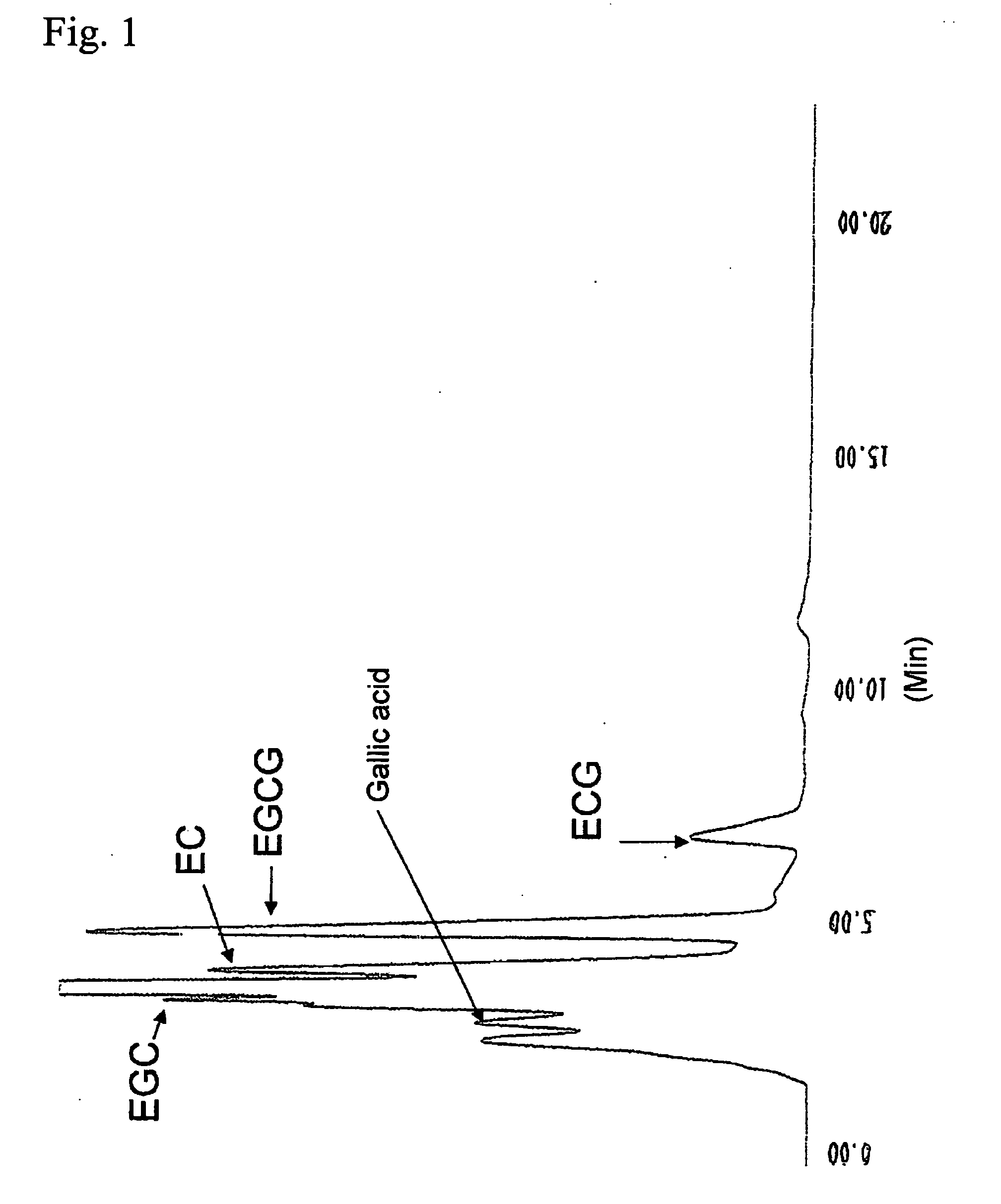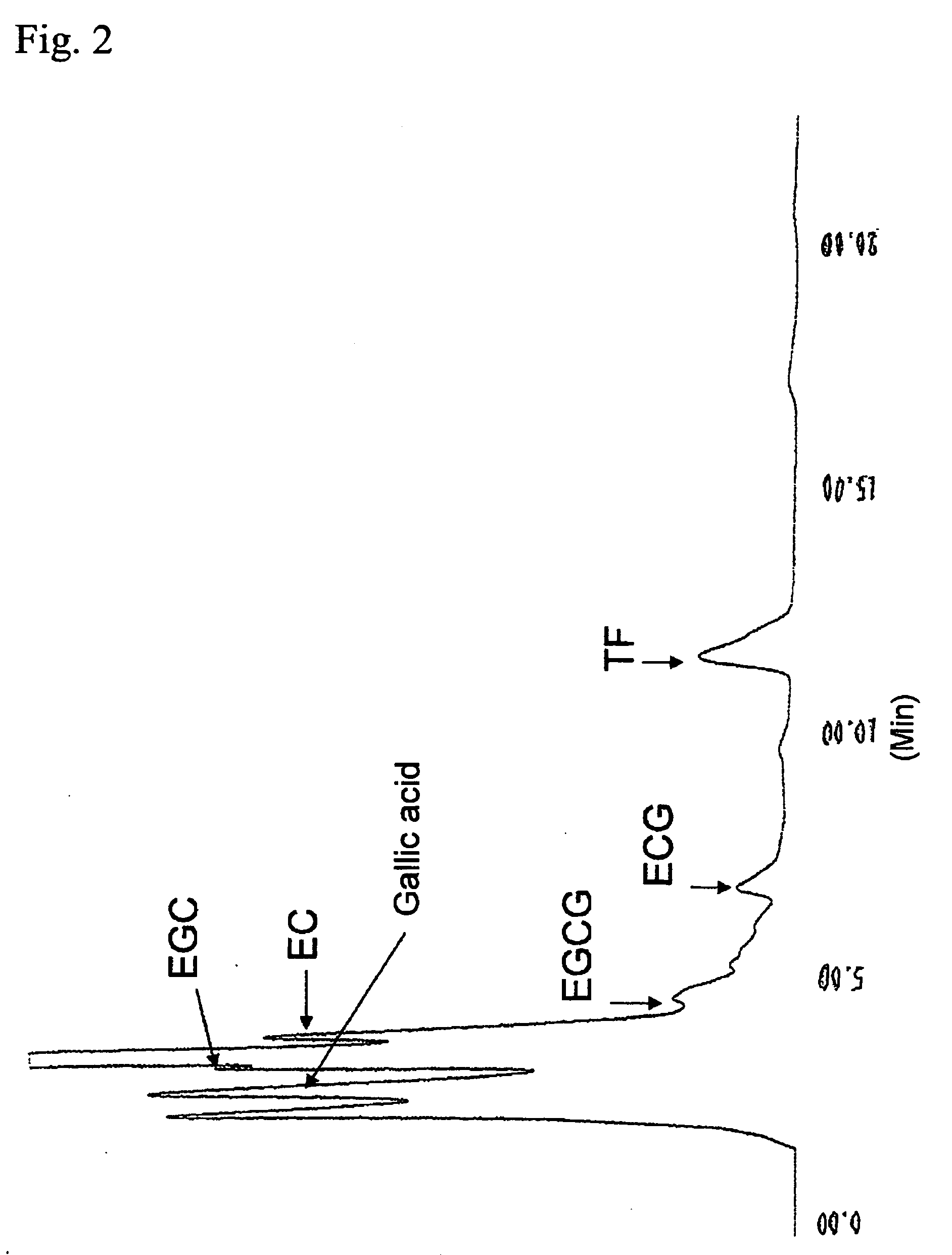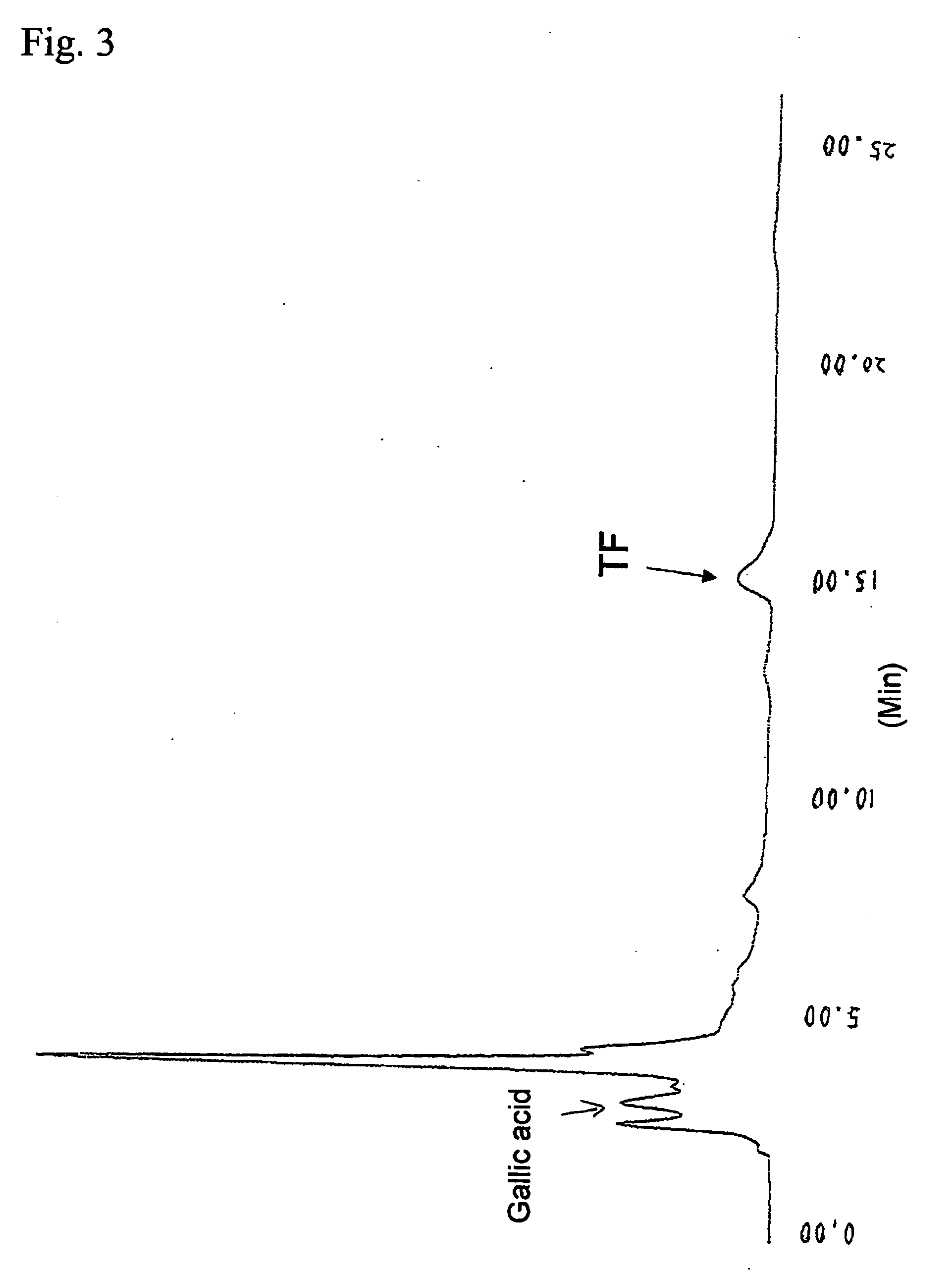Process for selective production of theaflavin
a technology of theaflavin and production method, which is applied in the field of selective production of theaflavin, can solve the problems of increasing the cost of addition of tannase, difficult to obtain a sufficient amount, and extremely low content of black tea, so as to achieve efficient and inexpensive production of large amounts of theaflavin, increase the amount of theaflavin production, and the effect of increasing the amount of theaflavin
- Summary
- Abstract
- Description
- Claims
- Application Information
AI Technical Summary
Benefits of technology
Problems solved by technology
Method used
Image
Examples
example 1
Preparation of Plant Cell Culture
[0090]For this experiment, adult tea cells (tea variety: Sayamakaori, tea section: seedling) were used as plant cells for preparation of a tea cell culture in the following manner. Specifically, a callus of cultured tea cells grown on agar medium was transferred to Gamborg's B5 (B5) medium (100 mL per flask) containing 2,4-dichlorophenoxyacetic acid and sucrose. This was then cultured under dark conditions at 25° C. while shaking at 110 rpm for approximately 10 days until homogeneity of the cultured cells, to prepare a tea cell culture (Camellia sinensis cell culture). The peroxidase activity of the tea cell culture was 15.5 unit / mL.
[0091]Also, adult cells of tobacco (N. tabacum) and carrot (D. carota) were used for culturing in media having the composition shown in Table 1 instead of tea, and plant cell cultures including these cultured cells were prepared in the same manner as Example 1.
[0092]The peroxidase activities of these cell cultures were to...
example 2
[0099]For this experiment, the reaction starting material was changed from the bancha water extract to an ethyl acetate extract and the amount of the reaction starting material was reduced to examine production of theaflavin.
[0100]A 700 ml of bancha extract (a filtrate obtained by 24 hr extraction of 5 g of dry bancha with 600 ml of water and filtration removal of the tea leaves, with the tea leaf washing procedure during filtration resulting in 700 ml of extract) was extracted 3 times with ethyl acetate.
[0101]The ethyl acetate extract was concentrated to obtain 1.82 g of bancha extract. A 24.1 mg of the bancha extract (the 24.1 mg of bancha extract having an EC content of 4.3 mg, an ECG content of 1.1 mg, an EGC content of 4.9 mg and an EGCG content of 5.4 mg) was dissolved in 18.5 ml of water, and then 0.3 ml of 3% hydrogen peroxide and 1.2 ml of cultured tea cells were added and reaction was carried out for 28 minutes.
[0102]FIG. 3 shows the results of HPLC analysis of the reactio...
example 3
[0104]For this experiment, the amount of reaction starting material was increased 10-fold compared with Example 2, and the theaflavin production was examined during a reaction time of 9 minutes.
[0105]A 241 mg of the bancha extract obtained in Example 2 (the 241 mg of bancha extract having an EC content of 43 mg, an ECG content of 11 mg, an EGC content of 49 mg and an EGCG content of 54 mg) was dissolved in 185 ml of water, and then 3 ml of 3% hydrogen peroxide and 24 ml of tea cell culture were added and reaction was carried out for 9 minutes. Extraction was performed 3 times with ethyl acetate after the reaction. Elution was performed with methanol in SephadexLH-20 column chromatography to obtain 17.2 mg of theaflavin.
[0106]This demonstrated that even when increasing the amount of reaction starting material the production of theaflavin was possible with a short reaction time (9 min).
PUM
 Login to View More
Login to View More Abstract
Description
Claims
Application Information
 Login to View More
Login to View More - R&D
- Intellectual Property
- Life Sciences
- Materials
- Tech Scout
- Unparalleled Data Quality
- Higher Quality Content
- 60% Fewer Hallucinations
Browse by: Latest US Patents, China's latest patents, Technical Efficacy Thesaurus, Application Domain, Technology Topic, Popular Technical Reports.
© 2025 PatSnap. All rights reserved.Legal|Privacy policy|Modern Slavery Act Transparency Statement|Sitemap|About US| Contact US: help@patsnap.com



